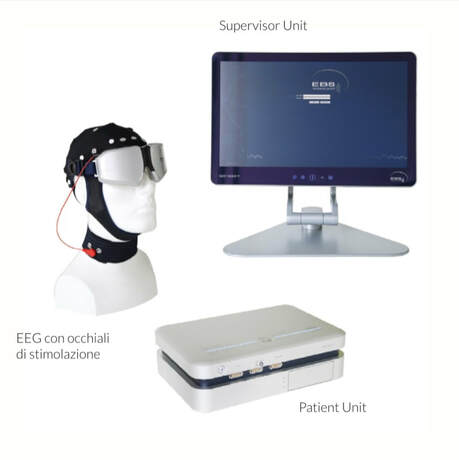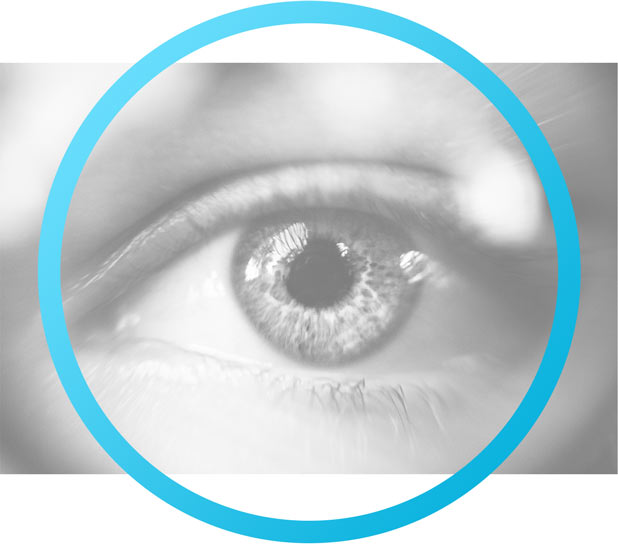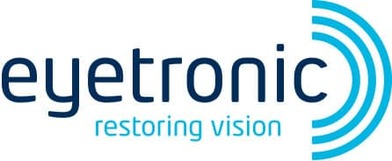Discover Eyetronic
Improve the field of vision
Improve the field of vision

Eyetronic therapy is a completely painless electrical stimulation of the optic nerve to stop the progression of glaucoma and in some cases improve the visual field.
Eyetronic is an electrical stimulation of the optic nerve that can repair damaged nerve cells and protect them from further damage. The therapy is completely painless and has been proven by clinical studies.
The therapy includes ten sessions of 70-90 minutes each, which are carried out for 10 consecutive working days. The optic nerve is electrically stimulated using special glasses. The therapist adapts the treatment to the needs of the individual patient and monitors the progress of the therapy on a monitor.

Damage to the optic nerve does not completely damage the tissue, many cells survive but have a functional disorder.
Electrical stimulation prevents further loss of nerve cells and by exciting their metabolism promotes the restoration of their function.

Clinical studies have demonstrated the absence of significant side effects.
The electrical stimulation used for the therapy is very low intensity and can be adjusted if the patient perceives discomfort.
In alcuni casi è possibile sviluppare un arrossamento o un'irritazione della pelle del viso nei punti di contatto con gli elettrodi che si risolvono sempre spontaneamente.
E' possibile svolgere normalmente le proprie attività prima e dopo ogni seduta terapeutica.
Glaucoma is often not diagnosed early and when you start to notice a loss of detail in the periphery it becomes difficult to stop the progression of the damage even with drug therapy.

Severe limitation of the field of vision
Glaucoma is a disease related to excessively high eye pressure that causes a progressive loss of peripheral vision.
It is the second cause of blindness worldwide after cataracts. In Italy it affects about a million people but half of them would not be aware of it because they do not have periodic eye exams.
Visual impairment caused by glaucoma can be prevented if the disease is diagnosed and treated promptly. This disease usually strikes after the age of 40.
The damage caused by glaucoma has until now been considered irreversible.

Under normal conditions, inside the eye there is a liquid called aqueous humor that is continuously produced and reabsorbed. If the drainage pathway is obstructed, there will be an increase in pressure inside the eyeball.
L'aumento della pressione danneggia i neuroni che trasportano le immagini al cervello, chi è malato continua a vedere l’oggetto che fissa, ma non si accorge che l’area visiva periferica si sta riducendo progressivamente.
In the more advanced stages the damage occurs extends to the central area of the visual field and, if glaucoma is not successfully treated, visual acuity is reduced to the point of complete blindness.
The open-angle form is the most common and is caused by an obstacle that the aqueous humor encounters as it flows out.
It develops slowly and usually does not cause symptoms, so you may only realize you are suffering from the disease when the damage to the optic nerve has already reached an advanced stage. Therefore, it is advisable to undergo periodic eye checks.
Nella forma ad angolo chiuso l'iride può chiudere improvvisamente lo “scarico”, causando un rapido aumento della pressione intraoculare.
L'attacco di glaucoma acuto può causare offuscamento della vista, dolore oculare, mal di testa e vomito. Se trattato tempestivamente le conseguenze possono anche non essere gravi.
Since early diagnosis is essential, it is important to undergo periodic eye examinations after the age of 40 and in the presence of a family history of glaucoma.
The tests necessary for a correct diagnosis are:
- Eye pressure measurement
- Computerized visual field
- Fundus examination
- OCT (Optical Coherence Tomography)
Attualmente l'unico trattamento possibile per il glaucoma consiste nell'abbassare la pressione oculare attraverso l'uso di colliri da instillare quotidianamente o con la terapia laser SLT, purtroppo spesso non è sufficiente ad arrestare il danno in particolare se in uno stadio avanzato.
What do the clinical studies say?
Visual field loss is considered irreversible. Transorbital alternating current electrical stimulation (rtACS) has been applied to patients with visual field damage to achieve functional recovery.
E' stato condotto uno studio in doppio cieco, randomizzato, con gruppo di controllo, con applicazioni quotidiane di rtACS (n=45) o una stimolazione placebo (n=37) per 50 minuti in 10 giorni lavorativi. L'età media dei pazienti è 59,1 anni. L'efficacia del trattamento è stata misurata tramite campo visivo sopra-soglia 48 ore dopo l'ultimo dei dieci trattamenti e a tre mesi di distanza.
The rtACS-treated group showed an average visual field improvement of 24%, significantly better than the control group (2.5%).
https://journals.plos.org/plosone/article?id=10.1371/journal.pone.0156134
Eyetronic is available at
I want to receive more information about Eyetronic
https://eyetronic-therapie.de/en/

Page intended for healthcare professionals.
In compliance with the provisions provided by the Ministry of Health regarding health advertising relating to medical devices, in vitro diagnostic medical devices and medical-surgical devices, we inform you that the contents of this page are intended exclusively for healthcare professionals. Where present, the description of the products is for informational purposes only and is not intended to promote them.
